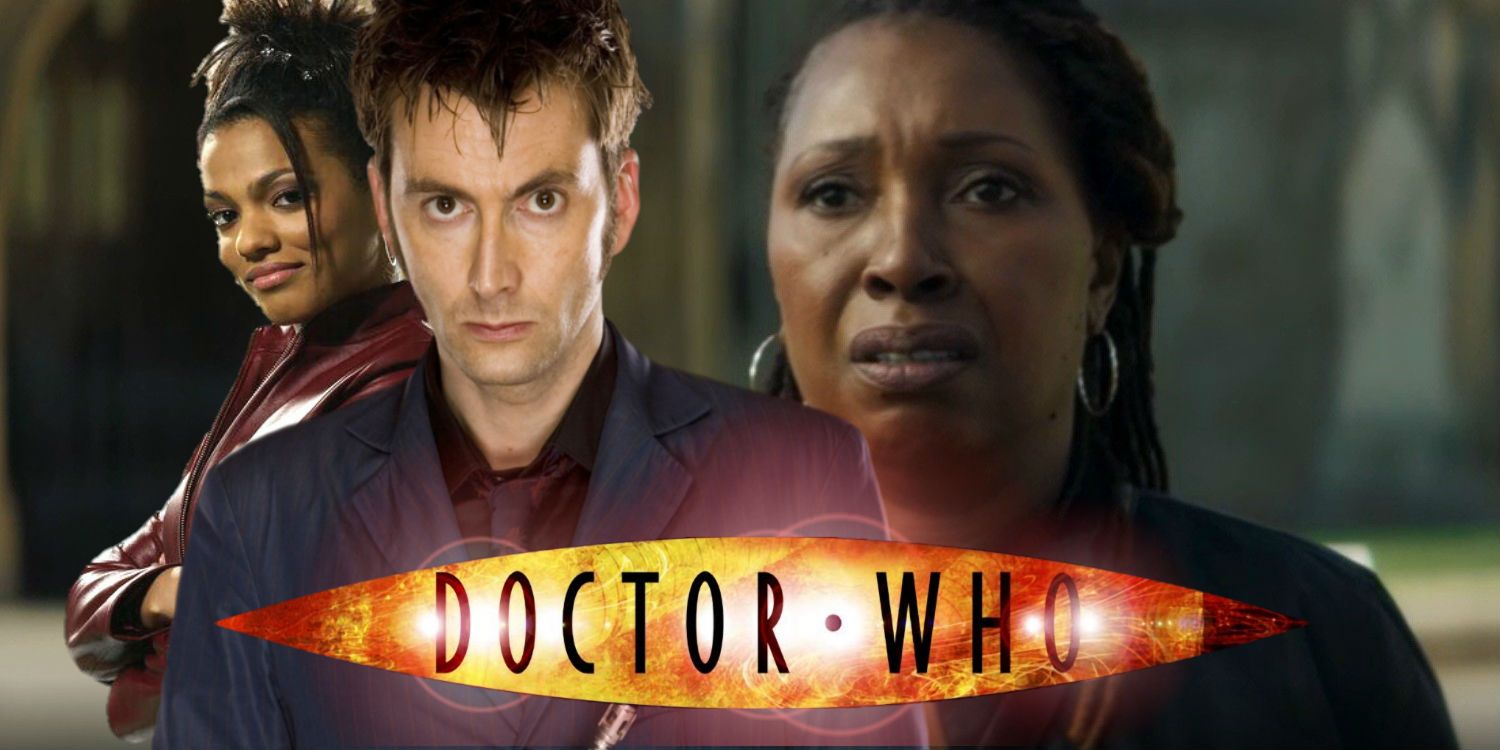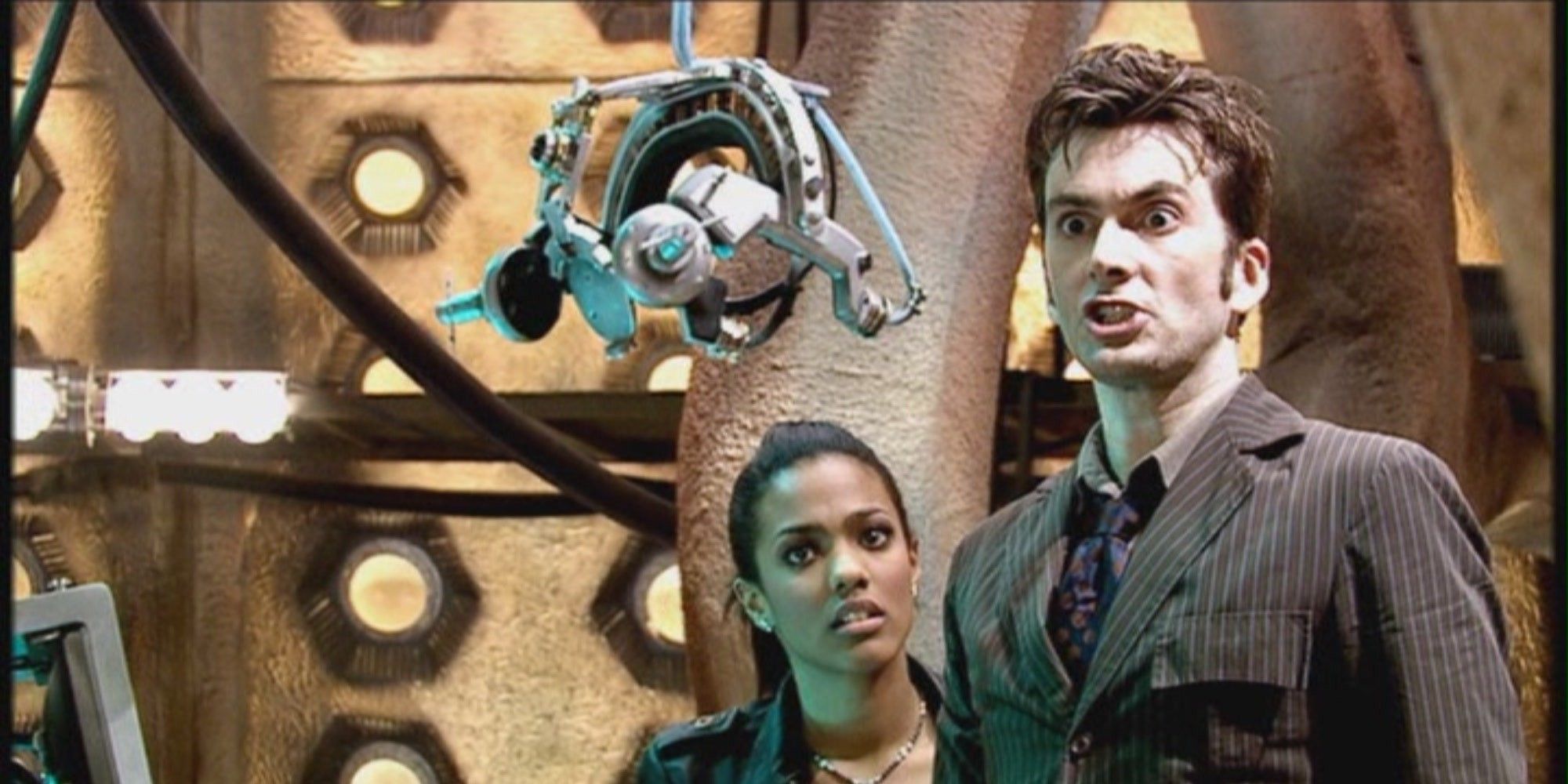Caution: Spoilers ahead for Doctor Who's "Fugitive of the Judoon"
Doctor Who's chameleon arch returned for season 12 - here's the origins of the Time Lord technology and exactly how it works. "Fugitive of the Judoon" proved to be an extremely eventful episode of Doctor Who, introducing Jo Martin's mysterious new Doctor, bringing back John Barrowman as Captain Jack Harkness and establishing a major new Cyberman storyline for the future. But, of course, it was the unknown regeneration of the Doctor that dominated post-episode debate, with this version of the character found hiding out as a tour guide in 21st century Britain, of all places.
The Judoon have been hired by a mysterious puppet master to locate and find a certain iteration of the Doctor. They're drawn to a couple living in Gloucester and mistakenly apprehend the suspicious husband, ignoring Ruth, who is clearly none the wiser as to what's going on. Ultimately, however, it's revealed that Ruth is actually the Judoon's target and that her entire Earth identity is a facade to cover up her true self: the Doctor. According to the Doctor (Jodie Whittaker's version, that is), this deception was achieved via the use of a chameleon arch, which is the dangling helmet contraption briefly glimpsed aboard Ruth's TARDIS. However, the details of this process are glossed over, and could prove confusing to those unfamiliar with David Tennant-era Doctor Who.
The concept of the chameleon arch was first introduced by Paul Cornell in "Human Nature"/"The Family of Blood." Invented by the Time Lords, this device would completely drain the user of their memories and install a pre-programmed persona into the host instead, leaving them completely unaware of having lived any other life. However, the process also alters the subject's biology, meaning they can essentially become another species and are cloaked from scans and the like. The Tenth Doctor used the chameleon arch to hide in WW1 England and the Master in his guise as Professor Yana in "Utopia", but certain reminders and triggers can bring back old memories. The Tenth Doctor would dream of his old adventures while in the guise of John Smith and the word "regeneration" caused Yana to become conflicted. Ruth experiences similar flashbacks throughout this week's episode.
The chameleon arch has to store the Time Lord's original memories and biology somewhere, so they might one day be restored. The Tenth Doctor and Master used the standard fob watch container, which would return their original personas when opened. Ruth has a fire alarm, which did exactly the same when she broke it. As a precaution, these items are usually hidden away or kept near the amnesiac Gallifreyan to avoid a Time Lord's personality falling into the wrong hands, but they also have a built-in perception filter, much like the TARDIS, to prevent any meddling. The Time Lord using the chameleon arch will have a handler of sorts - someone to guard them and let them know when it's time to come out. The Doctor had Martha Jones, the Master had Chantho, and Ruth had her husband.
Some Doctor Who viewers might've suspected Ruth was under the influence of the chameleon arch as soon as it became clear her body was hiding a second personality, but it would've been the telltale golden mist transfer from the fire alarm that confirmed it. Cornell's "Human Nature" story is widely considered a modern classic, and the return of the chameleon arch is most welcome, especially after Doctor Who season 11 was devoid of any franchise lore.
Doctor Who season 12 continues with "Praxeus" February 2nd on BBC and BBC America.


